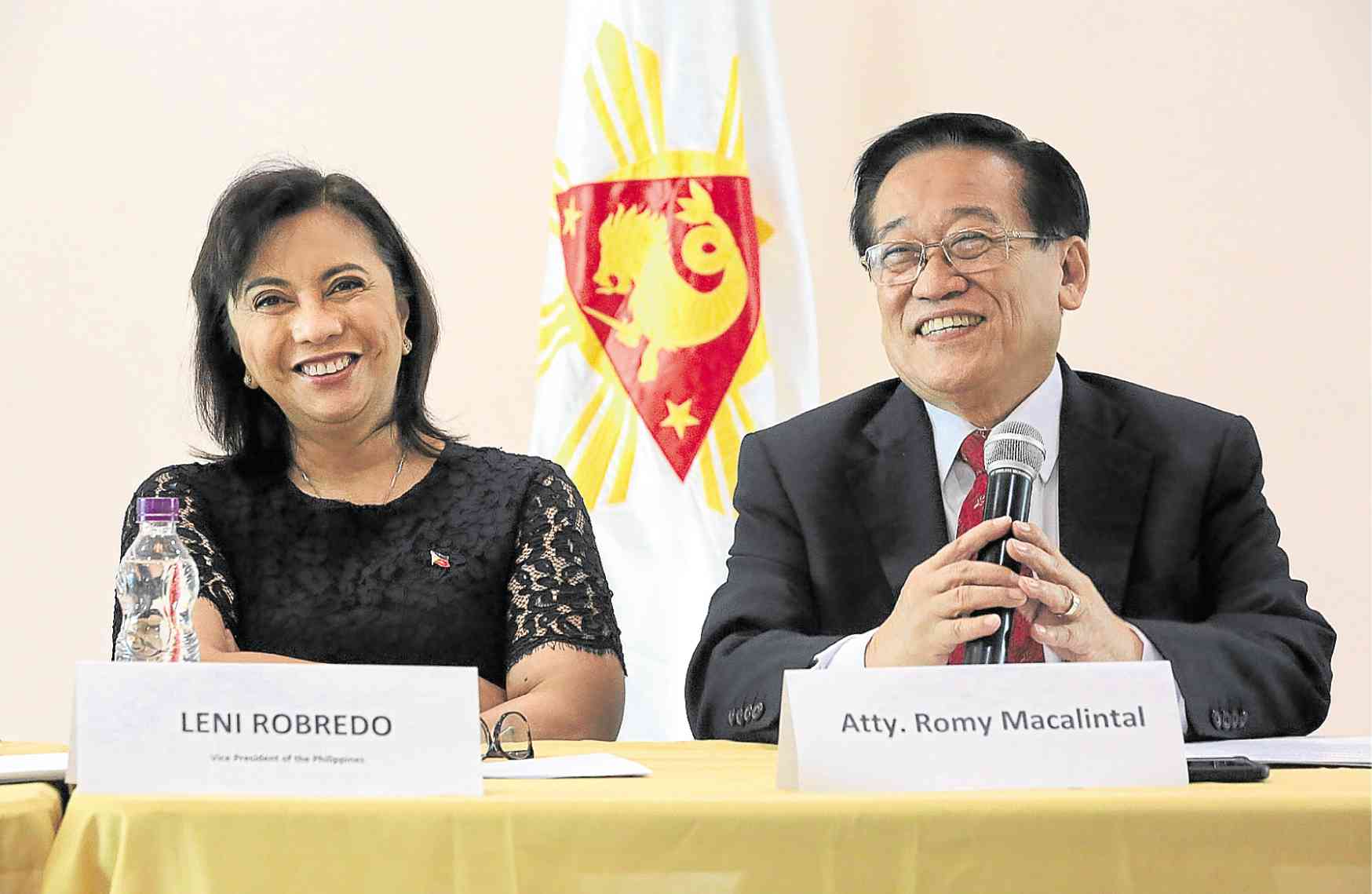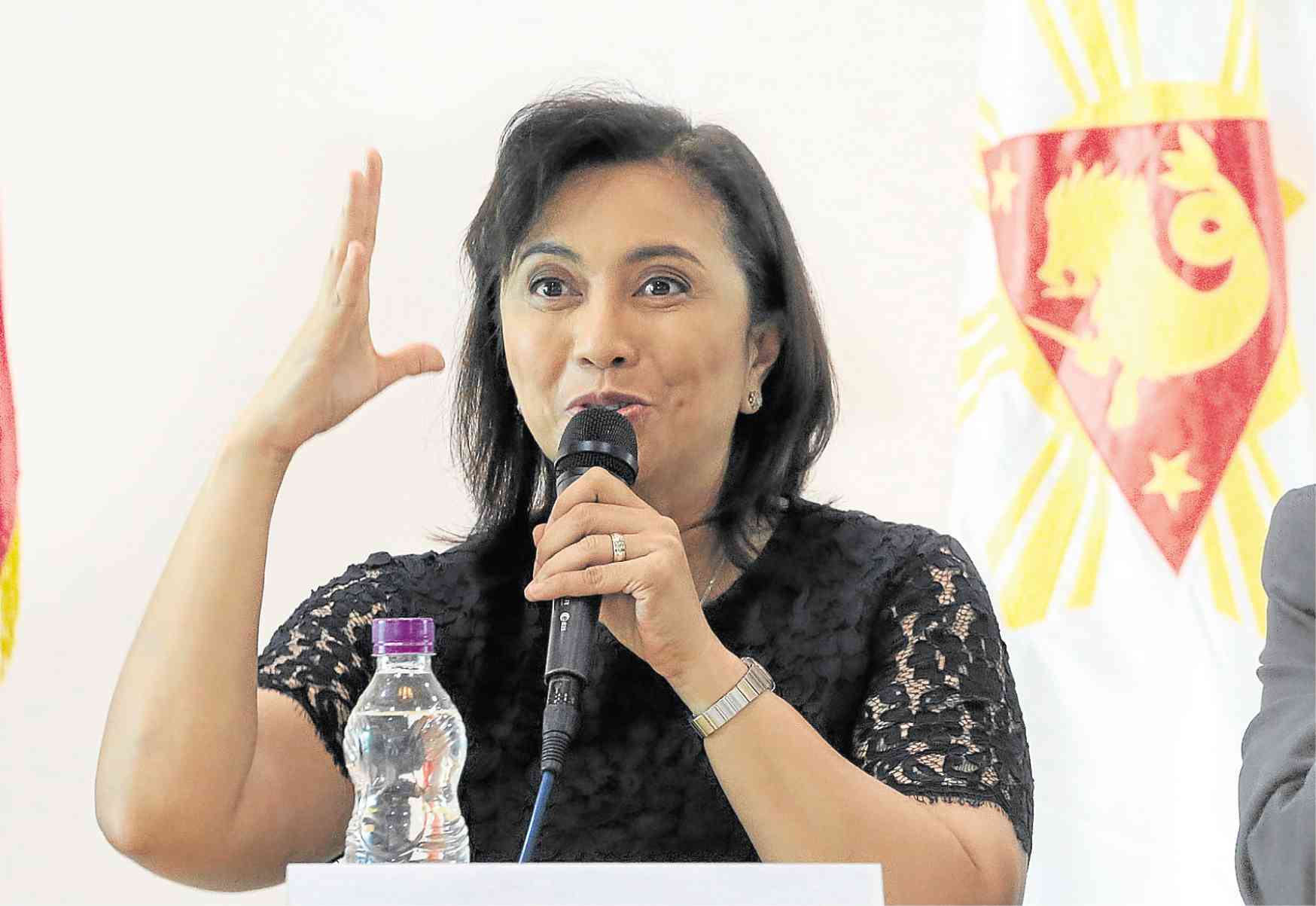Robredo scores big win in Presidential Electoral Tribunal

SIGNIFICANT VICTORY Vice President Leni Robredo and her lead counsel, Romulo Macalintal, describe the ruling of the Presidential Electoral Tribunal as “a very significant and legal victory on our part.” —GRIG C. MONTEGRANDE
The Supreme Court, sitting as the Presidential Electoral Tribunal (PET), has unanimously set aside the 50-percent shading threshold that defeated vice presidential candidate Ferdinand “Bongbong” Marcos Jr. sought to apply in the recount of ballots in his electoral protest against Vice President Leni Robredo.
“The court herein resolves to partially grant the subject motion insofar as setting aside the use of 50-percent threshold in the revision proceedings,” the tribunal said in the resolution dated Sept. 18.
The threshold refers to the minimum amount of shading adopted by the Commission on Elections (Comelec) for the voting machines to recognize an oval as a valid vote.
The PET resolution, however, did not explicitly side with Robredo’s plea to recognize ballots with ovals shaded 25 percent as valid votes.
Robredo had presented the Comelec’s Sept. 6, 2016, resolution as basis for imposing the less strict threshold.
Article continues after this advertisementBut the PET noted it was “not clearly establish[ed]” that the threshold was already set “prior to the 2016 elections.”
Article continues after this advertisementReturns instead of ballots
Instead of looking at the ballots and adopting a specific shading threshold, the PET directed head revisers to “refer to the election returns to verify the total number of votes as read and counted by the vote counting machines (VCM).”
Verifying votes using the election returns (ERs) “shall be strictly enforced during the appreciation of ballots by the tribunal,” said the resolution.
ERs refer to the printed and electronic document produced by the voting machines that tally the total votes received by each candidate per precinct.
The PET resolution amended Rule 62 of the 2018 PET Revisor’s Guide, pertaining to the segregation of contested votes, “effective immediately.” The rule previously did not mention the use of ERs.
The PET noted that just like the ballots, using ERs would achieve the objective of “mimicking or verifying/confirming how the VCMs read or counted the votes.”
Faster revision
Using the ERs may speed up the revision process, or the identification of precincts, which show signs of significant anomalies.
This would allow the procedure to be “more flexible and adaptive to calibrations of the voting or counting machines in the future,” the PET said.
To illustrate, the PET pointed out that ERs could easily show discrepancies in the counting of votes, especially if the stated number did not match the physical count of ballots.
Not established
The 2018 PET Revisor’s Guide previously set a 50-percent shading threshold as guidance in the identification of challenged votes.
Robredo first questioned the rule in an April 5 motion, but the PET swiftly denied it in an April 10 resolution.
Only when she filed an appeal did Robredo submit a copy of Comelec Resolution No. 16-0600, dated Sept. 6, 2016, which served as the basis for her plea.
Marcos opposed Robredo’s pleadings contesting the rule. The Office of the Solicitor General sided with him instead of the Comelec, which agreed that the 25-percent threshold should be sustained.
In reversing itself, the PET said there was “no basis” to impose the 50-percent threshold. But, it maintained that when it drafted and approved the rule, it was “never informed of any official act of the Comelec” adopting the 25-percent threshold.
Comelec Commissioner Luie Tito Guia did inform the PET about the 25-percent threshold in a Sept. 6, 2016, letter, but the tribunal said it was not furnished a copy of the resolution.
Robredo assailed the stricter 50-percent threshold supported by Marcos, fearing this would disenfranchise voters who shaded their votes less thoroughly.
The PET called this claim “highly premature” and clarified that “there is yet no final deduction or addition of votes,” since it had not even began ruling on the parties’ claims in the vote appreciation stage.

SIGH OF RELIEF Vice President Leni Robredo welcomes as “very good news” the Presidential Electoral Tribunal’s decision setting aside the 50-percent shading threshold that Ferdinand “Bongbong” Marcos Jr. had sought to apply in the recount of votes. —GRIG C. MONTEGRANDE
‘Good news’
Facing reporters on Wednesday, a visibly relieved Robredo welcomed the resolution as “very good news.”
Likening her situation to that of a typical Fernando Poe Jr. movie, she said her camp took all kinds of beating at the start, before finding some breathing space.
“If we look at the language of the resolution itself, it would seem like the last nail in the coffin [of the election protest] has been put in place,” she said.
“But knowing Mr. Marcos, he will do anything possible, no matter how improbable just so he could put himself back in power,” she added.
Her lead counsel, Romulo Macalintal, said the PET resolution was “a very significant legal and political victory on our part.”